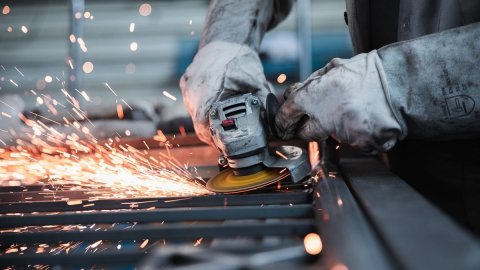Assolombarda reduces GDP growth estimates in Lombardy: from +4% expected at the beginning of the year to 2,6% in the latest scenario. The downward revision was communicated by the Assolombarda Study Center and published in the magazine Genius&business. Despite the worsening scenario, Lombardy should still be able to close the gap with pre-Covid within this year, ahead of Italy which is postponing to 2023.
“Lombardy's economic picture – he said Alessandro Spada, President of Assolombarda – is strongly influenced by the persistence of the conflict, by high energy costs and by the insufficiency of materials and semi-finished products which make it difficult to plan industrial activity and severely contract margins. This is an unprecedented situation which for the current year leads to a much lower growth in Lombardy's GDP than we forecast a few months ago. We must intervene with a medium-long term structural policy that leads to energy independence. We need to work without prejudice with clear rules and quickly. What is worrying - added President Spada - are also the data coming from the world of work where in 2021 the unemployment rate will increase above all among the youngest".
Lombardy GDP growth, the comparison with the European regions
In terms of GDP, in the two years of the pandemic, Lombardy, in comparison with Italy, had first lost as much as the rest of the country (-8,9% for Lombardy and 9% for Italy in 2020), then had recovered with a rebound of +7% compared to the national figure of +6,6%. In 2021, compared to pre-Covid, Lombardy recorded -2,5% and Italy -3%.
A situation that unites us, with different intensities to the other motor regions of Europe: the gap with the pre-Covid of Baden-Württemberg in 2021 recorded a -2,2% very close to the Lombard figure, Bayern -1,4% , but Catalonia recorded a gap of -6,6%. On the recovery times of the GDP on the levels of 2019, the Bayern is similar to Lombardy, i.e. expected in 2022, while Baden-Württemberg slips into 2023 and Catalonia will delay further.
Lombardy GDP growth, lack of raw materials and semi-finished products
According to Assolombarda, there are many negative factors influencing the current economic cycle. "The continuation of the Russia-Ukraine conflict, the further increase in the prices of energy and many commodities, the inflationary pressures, the pandemic that is paralyzing Shanghai, and the difficult reorganization of the value chains - states a note from the industrial association – are the factors that are still strongly affecting the Lombard economic system”.
Despite the critical picture, up to March the demand for manufacturing in Lombardy and the North West remained all in all consistent and this relative stability, the result of the competitive capacity of our companies, is also demonstrated by the Istat estimates on the trend of the Italian GDP in the first quarter, a limited decrease of 0,2%. On the other hand, in April the orders in the Lombardy region grew much more slowly than in the recent past and, at the same time, the expectations of demand and production, after the sharp slowdown in March, recovered but even here the levels are the lowest since February 2021.
One industry out of 4 has insufficient plants and materials to produce (in the pre-Covid period it was 1 out of 100): this situation affects stocks in warehouses, so much so that one company out of 6 declares a lower than normal level of raw materials and semi-finished products (a number of companies never so high since the beginning of the historical series, thirty years ago). So, the real obstacle to growth it no longer concerns demand as happened in 2020, but the lack of production inputs which limits supply and makes it difficult to plan industrial activity.
Employment recovery slower, unemployment on the rise
On the employment front, they will still be at the end of this year 76 thousand less employed people in Lombardy compared to 2019. The recovery will not be as rapid as is happening to GDP: according to estimates it will return to pre-Covid in 2023. The decline in 2020 was equal to -3,1%, followed by a +0,4% growth in 2021 and a +1,0% is expected in 2022 (source: Prometeia).
In Lombardy, unemployment is also growing, going from 5,2% in 2020 to 5,9% in 2021. Young people are most affected, with the unemployment rate of 15-24 year olds in Lombardy which has in fact risen in last two years: in 2019 it was 18,3%, in 2020 it was 19,4%, in 2021 it was 21,2%, about 15 percentage points higher than the 5,7% of Bayern and Baden-Württemberg, but largely less than 28,9% of Catalonia.





